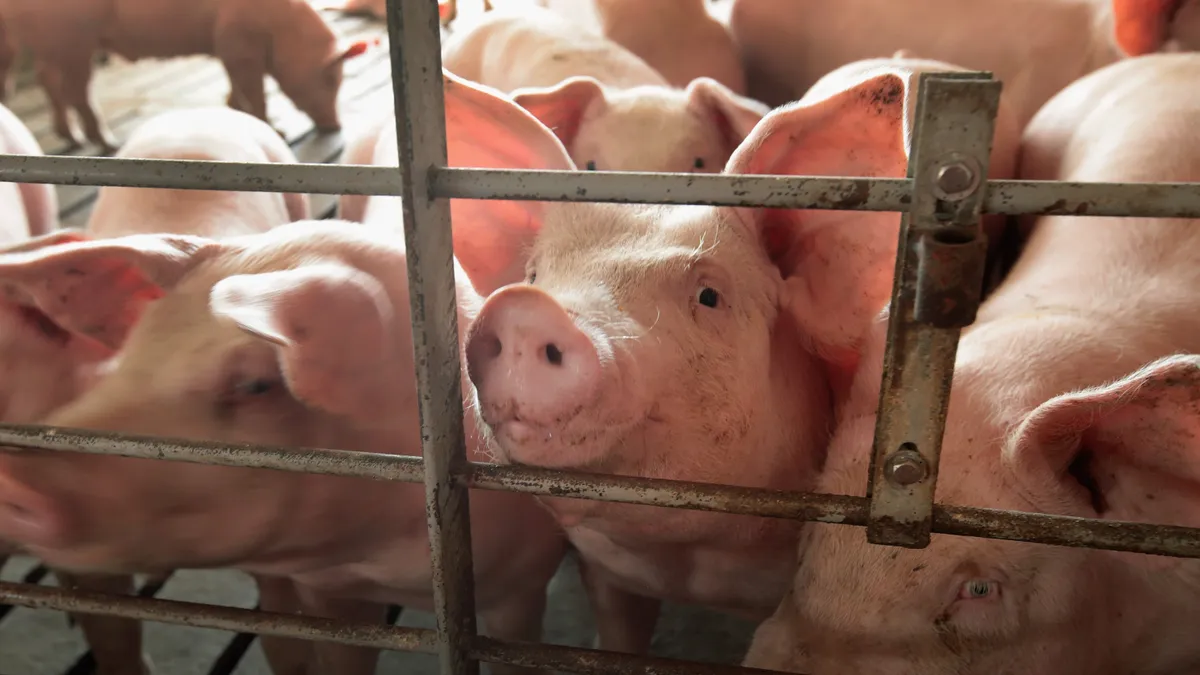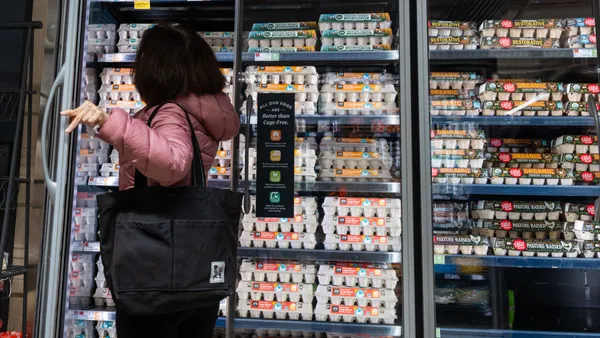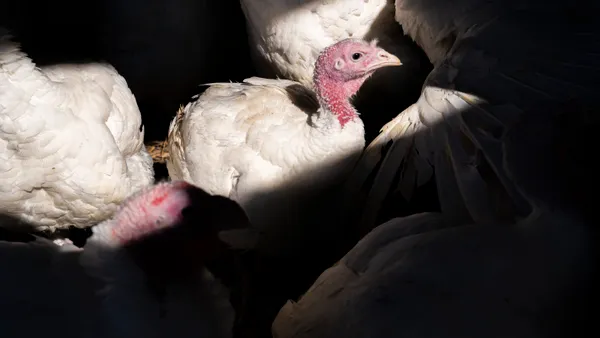Dive Brief:
-
A combination of high input costs and low hog values are evaporating pork producer returns and limiting industry growth, according to a report from CoBank released this month.
-
Since 2018, estimated returns for a farrow-to-finish operation have declined 66% to $7.30 per head, dissuading producer expansion, according to the report. Hog prices have risen this summer, but not enough to keep pace with surging costs for feed, labor, construction and other expenses.
-
Soft demand and a murky export outlook have compounded market challenges as retail prices remain elevated. Meanwhile, producers are adjusting to regulations on sow confinement under California’s Proposition 12, which could further raise operating costs.
Dive Insight:
As the cost of feed, labor and construction skyrocket, pork production is stagnating. According to the U.S. Department of Agriculture’s latest Hogs and Pigs report, supplies totaled 72.4 million head as of June 1, roughly unchanged from last year and down 1% from the previous quarter.
Brian Earnest, lead protein economist at CoBank and author of the report, said in an interview that key items such as bacon, breakfast sausage, pizza toppings and ham grew in demand throughout the COVID-19 pandemic as consumers prepared more food from home.
“But some of them have slipped this year,” Earnest said in terms of demand. He attributed this partially to inflationary pressures that have continued to slow grocery store spending, as well as stagnant pork consumption over the years.
Meanwhile, export demand has tumbled since 2020, when U.S. pork peaked at 7.28 billion pounds, according to the CoBank report. Although Mexico has become a bigger destination for U.S. pork, the global macroeconomic outlook is deteriorating.
China, the largest pork-consuming country, has become less reliant on exports after rebuilding its hog inventories, which were decimated by the spread of African Swine Fever. More than 25% of U.S. pork is exported and China remains a major market for producers, according to the National Pork Board.
In the report, Earnest said not only are market conditions pressuring hog and pork supplies, but higher construction costs and interest rates are also hindering future expansion plans. CoBank is expecting retail pork prices to remain stubbornly high this year, limiting consumption growth as shoppers gravitate toward beef and chicken.
Still, even if producers are able to find ways to lower costs, it may not be enough for an industry rebound, according to Earnest.
“Demand is part of the puzzle that needs addressing," he said.











